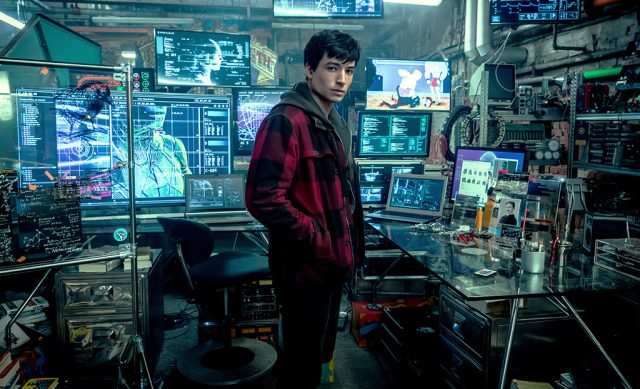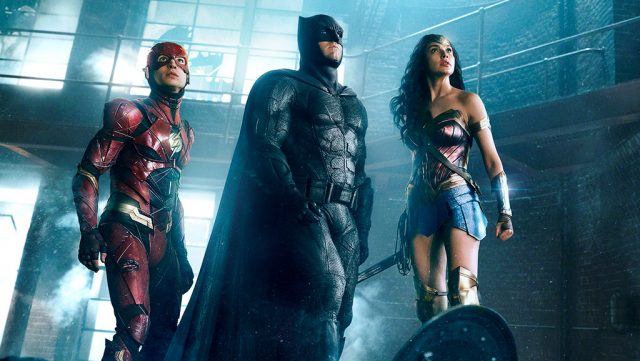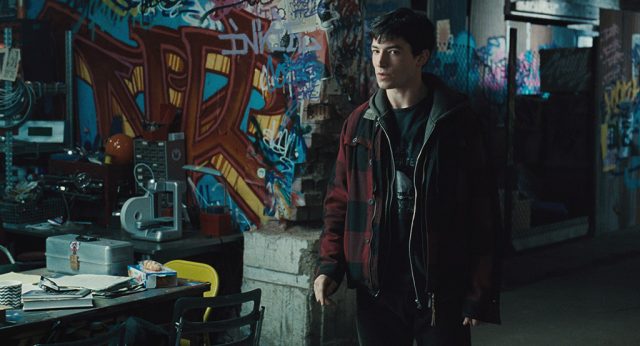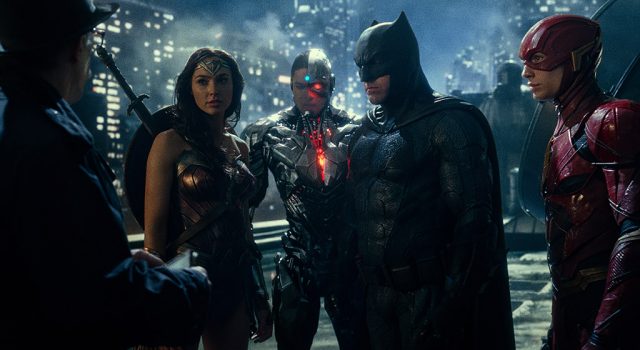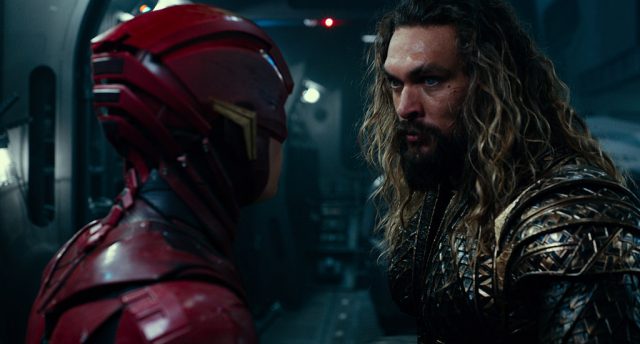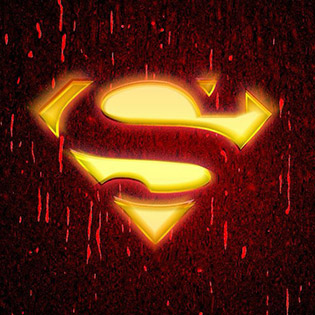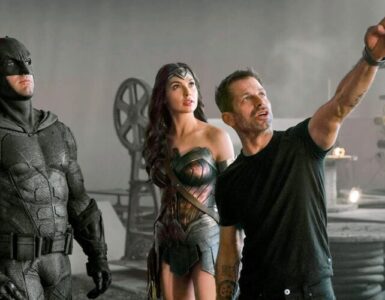While this is the first big screen appearance of The Flash/Barry Allen, it is not the first time that the founding member of the Justice League of America and the Fastest Man Alive has had a live-action depiction.
John Wesley Shipp played the Scarlet Speedster in one season of a live-action TV series in 1990/1991, while Grant Gustin currently plays Barry/Flash in a new version set in DC TV’s Arrowverse.
And no, the less said about the failed Justice League Of America failed TV pilot from 1997, and the Flash that appeared there, the better.
The great thing about Miller’s version is that The Flash looks nothing like his classic comic book counterpart. Gone is the red spandex, and the solemn portrayal of Barry Allen. The super armoured Flash from the film looks to have taken inspiration from the Injustice video game, and the humour-centric depiction is more of a cross between Barry Allen and Year One Wally West.
Justice League opens November 17th.
QUESTION: How much did you know about the Justice League or The Flash?
EZRA MILLER: I’ve been a big comics fan from a very young age. Conveniently, I read a lot of DC as a tyke. I’ve always loved the terror and villainy in the DC universe. I was really into Batman and wore a foamy Superman suit around the house for a solid few months. As a kid, I also put a lot of time and energy into writing and drawing comics. I had a whole series about three elderly women who were assassins, which was called, I’m Getting Too Old for This. I even invented a superhero called Super Pig, who was a chameleonic swine of sorts. My nanny has a massive collection of Super Pig merchandise I hand-made, including shirts, action figures and comic book issues; the comics were drawn with one crayon [laughs]. I was a one-man studio then. Comics were a readily accessible mode of storytelling I could tap all on my own. They were really key for me from kindergarten on.
I wasn’t a particularly big reader of The Flash at that age, but I do recall that as a youth, when I would be running around outside, I would often get a little ahead of myself and my feet and, as a result, would pull what quickly became known as a definitive move of mine, and what my mother called the face plant. This involved me taking a full nose-dive into concrete, potholes, other children…you name it. It was a very perilous tendency. I went to the hospital for nose-dive related injuries a few times. So, I feel the role of The Flash dwelled and swelled within me, even then.
When my parents took me into the city as a youngster, I’d always beg to go to a well-known comic book store called Forbidden Planet. I just wanted to live there, in the store, but also in the stories that rested on its shelves. And I do in a way get to live part-time in that dimension – the comic realm. We all have access to that. I still can’t really live in that store…there’d be zoning issues at the very least [laughs].
QUESTION: What aspects of The Flash and the character’s history did you connect with?
EZRA MILLER: I really love and cherish that I had the opportunity to draw from the incredibly rich legacy of The Flash. I learned there’s a wonderful interplay between inevitability and connection, and between death and love, that exists in all the Flash stories. Much of The Flash’s mythology is imbued with the sensations of Barry Allen’s heart through its anguishes and triumphs. It’s his heart that drives him to connect with and serve the world, even as the very force that gives him the power works to consume him and bring him into an ultimate unity with its current.
Barry is not infallible or immortal; he is very much a fragile, vulnerable human being. He also is not fearless. My version of Barry experiences crippling anxiety and terror. He uses wit and humor to deal with that fear. Barry has been endowed with these powers, some of which he’s incapable of handling because he’s human. At the same time, becoming a quantum anomaly of sorts is changing and growing Barry’s perceptual capacities and appreciation for everything that’s happening around him. This was all very inspiring for me to explore.
I found a link between myself and Barry in our admiration of the people around us. Barry and I are both nerds and fans of Super Heroes. There’s an appreciation, even in life-threatening situations, of the glory he’s beholding, and I found a port of access in that similarity. I, too, was in awe of the people around me as they threw themselves headlong into this work.
QUESTION: What role does Barry play in the Justice League and how does he find his way into the group dynamic?
EZRA MILLER: What’s so wonderful about the idea of a team of Super Heroes is the contradiction it presents to the premise of individual heroism so endemic in Super Hero mythology, in which one person with power is the only hope for salvation. In the Justice League, there’s a nice reminder that as interconnected beings, we need each other no matter how strong we are.
The Justice Society of America, the precursor to the Justice League, was the first-ever Super Hero team-up in comics history. What’s so great about this League is the idea that every member has something unique to offer, and through unification across lines of division and personal separateness, they become an even greater force. In the film, it’s cool the way each member works in different ways, non-hierarchically taking on the tasks they’re best suited for, based on each of their powers. It’s what we do on film sets too, you know? With the specification of labor, Arthur, the sound guy holds the microphone above his head all day long. I pretend to run. Emmy does make up. Jason Momoa breaks things and throws stuff and yells. Steve muscles the dolly around. Ray Fisher skulks and sulks and beeps and recalculates and smolders. Zack Snyder directs. Ben Affleck keeps it real. Gal Gadot slays fools and keeps it hyper-awesome. It’s like a Walt Whitman poem. Everyone’s got their thing and when everybody simply trusts in their own power, as well as in each other’s powers, we can really make things happen.
Even though Barry is at an early stage of understanding his powers, he can offer a lot in terms of expedience, so he’s a very useful Super Hero to have around. Barry also brings some deficits, in terms of his inexperience and clumsiness during the early stages of harnessing his powers. He’s also somewhat socially inept. So, he brings both strength and weaknesses to the League. Barry appreciates the other members of the League as the incredible phenomena they are.
QUESTION: What was it like working with the members of your team – the ensemble of actors playing the other members of the League?
EZRA MILLER: There is this incalculable and unpredictable thing that happens between people when you put them in a space and give them a task. We’re exploring that in the context of a Super Hero team-up, of course, but we were also exploring that on set as an ensemble of actors. I really have to give it up to everyone who brought this team together. We didn’t have weeks to rehearse before the start of production, so we largely got to know each other on set, just as our characters mostly meet in the timeline of our story and have to learn how to work together as a Super Hero team in a very short time. I’m thankful that the natural chemistry of our group dynamic was there from the start.
Everyone was working together to make the film the best it could be; no one was operating from a place of self-indulgence or self-importance. I’m really so lucky to work with such a good-hearted, good-natured, talented and brilliant group of people. All of them delight me in such specific and different ways. Now that filming has wrapped – and everyone’s so busy trying to save the world on their own – I genuinely miss them.
QUESTION: What is the relationship between Batman and The Flash?
EZRA MILLER: Batman and The Flash embody huge polarities in their approach to being a Super Hero. Barry is a novice; Bruce is a veteran. Bruce is sardonic, cynical and cantankerous and bears a rightfully earned pessimism about the world. Barry, even though he comes from similarly tragic origins, which so many heroes share, laughs at fear and floods every situation with appreciation, enjoyment and optimism – even as he stares into the abyss. So, Batman and The Flash are as different in their approaches to their reality as two people can be. Yet, there’s an appreciation and admiration for one another, as well as a recognition of something more fundamental in their identical intents, origins and practices. They’re the best detectives in the DC universe. Well, Batman’s better but Barry is the second best, so, y’know, whatever [laughs]! Batman has fancier stuff and he’s rich. Barry is poor; he’s… uh… let’s say, ‘re-appropriated’ a lot of his equipment in our story. Ben Affleck and I had so much fun exploring the dynamic of Barry and Bruce because the characters are such classically satisfying foils for each other.
QUESTION: And what’s the dynamic between The Flash and Wonder Woman?
EZRA MILLER: Barry thinks Diana is just the most unspeakably amazing, heroic, ultra-hot being that he could have ever possibly imagined. To be around her is staggering for him. He is constantly beguiled by Diana’s presence, and his admiration for her is really sincere. To put it simply – she’s a god and he is literally tripping all over himself, which is particularly rough when you’re moving faster than sound.
Wonder Woman is simultaneously very human and divine in her fierce compassion, which can permeate even the strongest defenses – and Gal Gadot truly possesses that trait. It’s a joy and an honor to work with her and just a pleasure to witness her in the act of concocting this iconic portrayal.
QUESTION: What was your favorite moment on set or favorite scene to play.
EZRA MILLER: The costume design and fitting process was lengthy and fascinating. I went in for more costume fittings on Justice League than I had for all my previous movies, combined; I think it was 25 fittings. I was devoted to the idea that I would be able to fully maneuver wearing the costume, and I wanted my body to correspond to the suit. The wardrobe department worked absolute miracles through intensive labor and meticulous efforts to facilitate my being able to run as fast as I could, and turn my head all the way from side to side while wearing the costume. Their work was a real labor of love, and I was so grateful to that department for making all that possible.
I was a wreck of excitement every single day of production. I was just ultra-pumped. hyper-stoked and über-jazzed. We had many long days, during which I got to observe our crew members being real-life Super Heroes – holding heavy objects above their heads for twelve or fourteen hours straight, like Superman, but these are human beings with a normal relationship to physics. There’s really intense and impressive work that goes into making these movies.
During part of production, some nomadic musicians were staying at my house, and Zack Snyder lovingly referred to them as ‘the hippies,’ though I wouldn’t identify this talented group of individuals, who called themselves the Lyrical Nomads, as purely hippies. Early on, Zack started telling me to, ‘Bring the hippies to set.’ So, near the end of production, I did, in fact, bring ‘the hippies’ to the set. They prepared for us this super-food – a mashed avocado and goji berry dish that is known amongst them as a super-breakfast, so the Justice League had to have some of that [laughs]! They served the food to some of the cast and crew, and then played some illuminating, sensational, make-you-feel-real-good music. That day of their visit, we were filming a huge apocalyptic set piece, and these gorgeous witchy kids, who you’d never expect to see in this place, were making everyone feel helplessly happy, giving them hugs and feeding them mashed avocados. They crooned for the crew as they changed the lighting. They serenaded Ben [Affleck], as he cooled off from a tough scene punching out Parademons. It was glorious. A proud moment for me of colliding different worlds to great effect.
QUESTION: How did you physically prepare to play The Flash?
EZRA MILLER: In the few years leading up to Justice League, I trained in different capacities. I practiced martial arts for two years, and even trained for a while in the Wudang mountains in China. To better understand The Flash’s movements, I worked with several dancers and choreographers, including gifted mages like Zack Winokur and Bobbi Jean Smith. Closer to the time of pre-production, I also started to work with [cast trainer] Mark Twight and his incredible team, who led me through this fascinating reflex training to bring in additional elements of awareness to the character’s physicality. The entire League trained REALLY hard constantly throughout the shoot.
I was also fascinated with the idea of filling in the gaps of the Flash comics I was reading, which have this classic iconography of the conditioning of the character’s body, and I deconstructed and reconstructed those pieces and created a fluid language of how The Flash gets from one point to another. I took an interest in ballet and found a lot that was useful in the form of petit allegro – ‘little fast’ – quick, lively and small jumps. I spent a lot of time watching the RIP videos that a talented group of dancers in California make to honor the friends they’ve lost. The dancers in those videos do insane work with perceptual distortion of time and motion, and I was really moved and informed by their stuff. I was also inspired by crows, cheetahs, mongooses and other fast-moving and intelligent creatures, as well as by rushing water and, of course, lightning.
QUESTION: Why is Justice League an important movie for audiences today?
EZRA MILLER: Obviously, Justice League is a fun comic book movie, but any story that reminds us of the simple, core truth that we are all living together on this Earth, and of this Earth, is welcome.
We are experiencing quite a crisis on this prime planet of ours, and in many cases, it seems that we respond to crises by isolating ourselves in the groups we identify with most readily, which further deepens the trenches of our division. In doing so, we forget that we share this planet. It is a fragile and tenuously hospitable spaceship floating through the cold and dark, and a problem in any section of a spaceship is a problem for everyone on board. We are all imperiled by the threat at hand, which is not approaching from a distant planet. It’s here. It’s us. It’s our fear. Our hate. It’s war. It’s terror. It’s pollution. Transcending our differences and coming together to accomplish a seemingly impossible task – saving our world – is an imperative. We need one big international justice league and we need most people to join.


